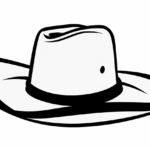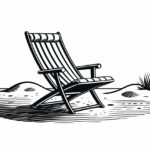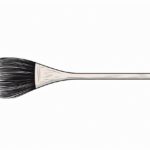
An anchor is more than just a maritime tool—it’s a powerful emblem of stability, strength, and adventure. Throughout history, this sturdy device has represented the safe haven found amidst the unpredictability of the sea. Many artists and enthusiasts alike are drawn to the anchor’s distinctive shape, which lends itself to various artistic interpretations, from tattoos to decorative illustrations. Whether you’re an aspiring artist seeking to enhance your skills or simply wish to incorporate this timeless symbol into your artwork, understanding how to draw an anchor can be a rewarding experience.
This step-by-step guide is designed to walk you through the process of drawing an anchor with ease and confidence. You’ll discover tips and techniques tailored for both beginners and seasoned artists looking to refine their craft. So, gather your pencil and paper, and prepare to embark on an artistic journey that will enhance your drawing abilities while allowing you to create a stunning representation of this iconic maritime symbol.
Let’s dive into the world of anchor drawing together, where each line and curve will bring you closer to mastering this classic design. Equip yourself with the essential materials, and let your creativity set sail as we navigate the steps to crafting your very own anchor illustration!
Materials Required
Before we begin, make sure you have the following materials:
Having these materials on hand will ensure that you have everything you need to create a beautiful anchor drawing.
Step 1: Draw a Vertical Line
To start, draw a straight vertical line in the center of your paper. This will serve as the main body of the anchor. Adjust the length of the line according to your desired anchor size.
Step 2: Add the Flukes
At the bottom of the vertical line, draw two curved lines that taper towards the end. These lines will form the flukes, which are the pointed parts of the anchor that dig into the seabed. Ensure that the flukes are evenly spaced and symmetrical.
Step 3: Connect the Flukes
Now, connect the ends of the curved lines from Step 2 by drawing a straight horizontal line across. This line represents the stock, which is the horizontal bar of the anchor connecting the flukes.
Step 4: Draw the Arms
Next, add two curved lines on either side of the stock to create the anchor’s arms. These lines should curve upwards and then slightly downwards, resembling a smooth “C” shape. Make sure the arms are equal in length and symmetrically positioned.
Step 5: Add the Anchor Crown
Above the arms, draw a small horizontal line that connects the two curved lines. This forms the anchor crown, which is the top part of the anchor where the arms join together. The crown is typically shaped like a narrow rectangle.
Step 6: Sketch the Anchor Shank
To complete the anchor’s structure, draw a diagonal line connecting the bottom of the vertical line to the bottom of the anchor crown. This line represents the shank, which is the long stem of the anchor. Ensure that the shank is centered and aligned with the rest of the anchor.
Step 7: Add Details and Texture
Now that you have the basic shape of the anchor, it’s time to add some details and texture to make it more realistic. You can start by drawing small horizontal lines across the anchor crown and arms to give them a textured appearance. You can also add small circular shapes or dots along the shank and flukes to represent bolts or rivets.
Step 8: Refine and Erase
Take a moment to review your drawing and make any necessary adjustments. Use an eraser to remove any unwanted lines or smudges, and refine the shapes to your liking. This is your opportunity to add more definition or smooth out any rough edges.
Step 9: Ink or Shade
If you prefer a clean and finished look, you can ink over your pencil lines using a pen or marker. Start by tracing over the final lines of your anchor, emphasizing the key features and details. Once the ink has dried, erase any remaining pencil marks for a crisp finished drawing. Alternatively, you can choose to shade your drawing with pencils or markers to add depth and dimension.
Congratulations! You have successfully drawn an anchor. With practice, you will be able to create anchors of different designs and variations, adding your personal touch to each one. Anchors can be incorporated into various artworks, such as illustrations, tattoos, or even as standalone pieces.
Conclusion
Drawing an anchor may seem daunting at first, but with this step-by-step guide, you can easily create your own anchor artwork. Remember to take your time, practice regularly, and have fun with the process. Anchors are not only visually appealing but also hold symbolic meaning, making them a great addition to your artwork. So grab your drawing materials and start exploring the art of drawing anchors!
Fun Facts About Anchors
- Anchors have been used for thousands of years, with the earliest known designs dating back to ancient Greece and Rome.
- Modern anchors are typically made of steel, but historically they were made of wood with stone weights or lead cores.
- The fluke anchor (the most common type today) was invented by an English fisherman named John Balchen in the 19th century.
- One of the largest anchors in the world is on the USS Enterprise, weighing an astounding 30 tons.
- In heraldry, the anchor is a symbol of hope and steadfastness, often featured on family crests and flags.
- Naval traditions include “anchoring aweigh” to signal when an anchor is clear of the sea bottom, allowing a ship to set sail.
- Ancient sailors believed anchors had protective powers against storms and sea monsters, often invoking spiritual rituals before lowering them.
- Some anchors are designed to be “self-burying” in softer seabeds for better grip in challenging conditions.
- The “anchor tattoo” is a popular sailor tattoo symbolizing stability and grounding.
- In many cultures, anchors are associated with maritime exploration and adventure, often inspiring tales and folklore of the sea.
Suggestions for Scenes and Settings for Anchor Drawings
- Shipwreck Seabed: Draw an underwater scene of an ancient shipwreck with a rusty anchor resting among colorful coral and curious sea creatures.
- Harbor at Dawn: Illustrate a peaceful harbor at dawn, with multiple boats anchored against a backdrop of an awakening sky.
- Pirate Treasure Map: Create a treasure map scene where an anchor marks the spot, surrounded by mysterious islands and sea monsters.
- Old Lighthouse Plains: Imagine a rugged coastline with a historic lighthouse overlooking a tranquil bay dotted with anchored boats.
- Anchor Pendant: Design a close-up of a delicate anchor pendant hanging from a sailor’s neck, catching the glint of sunlight.
- Stormy Sea: Capture a dramatic scene where a ship battles through a storm, anchored amidst towering waves and lightning strikes.
- Ocean Floor Mystery: Envision a deep-sea scene with an oversized anchor partially buried in sand, surrounded by enigmatic ocean flora and fauna.
- Seaside Town Festival: Depict a lively festival in a coastal village, complete with decorative anchors as part of the festivities.
- Anchor and Chain Detail: Focus on a detailed study of an anchor and chain, showcasing the intricate craftsmanship and marine wear.
- Mythical Anchor Journey: Dream up a fantastical scene where the anchor serves as a portal to underwater kingdoms and mythical creatures.









